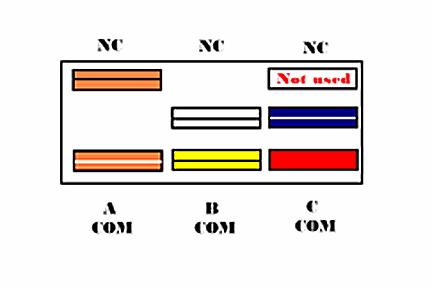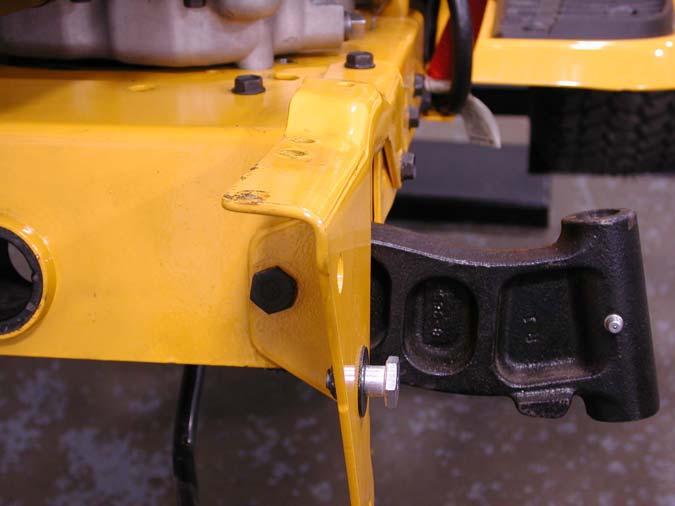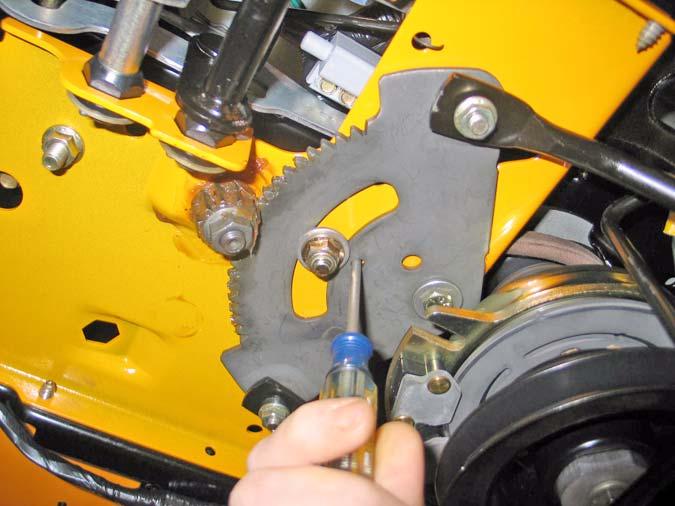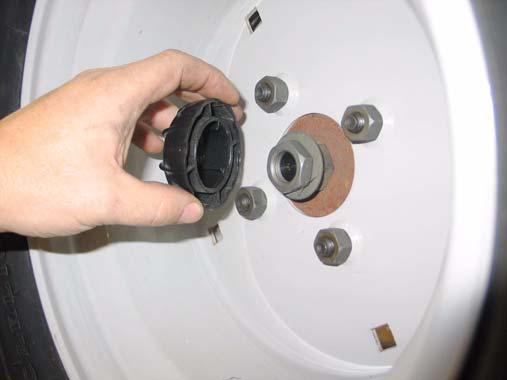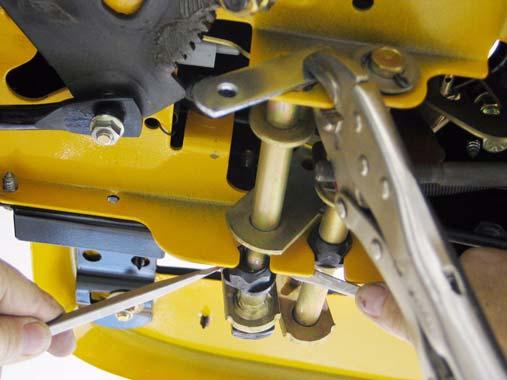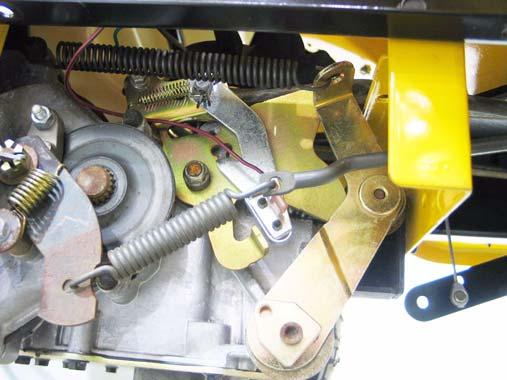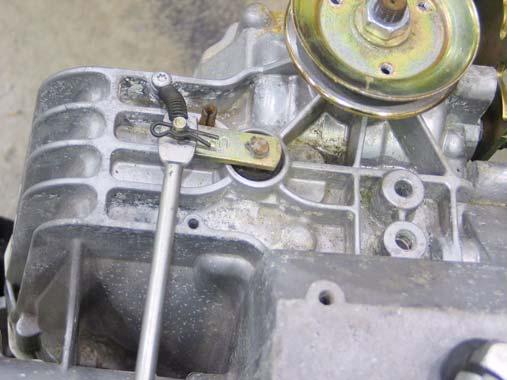
3 minute read
6. FUEL SYSTEM
5.14. Remove the two screws that were revealed by peeling-back the label. This can be done using a 3/8” wrench. See Figure 5.14.
Figure 5.14
5.15. Remove the fuel filler cap. 5.16. Lift the fenders off of the tractor, maneuvering them to clear the cutting deck height control lever. See Figure 5.16.
Figure 5.16
5.17. Remove the fenders to a safe place. 5.18. Replace the fuel filler cap.
5.19. Installation notes:
• Confirm that the seat safety switch wires are accessible before securing the fender. • 144 in-lbs is adequate tightening torque for the 5/16”-18 screws and bolts removed in this procedure. (1/2” wrench or T-40 driver) • When installing a large panel, start all of the threaded fasteners, then go back and tighten each after the panel is in position. • Test the operation of all controls and safety features in a safe place, free of obstacles and bystanders before returning the tractor to service.
6. FUEL SYSTEM
6.1. While the 1000 and 1500 Series tractors are built on the same frame, the fuel systems differ substantially in layout. 6.2. The 1000 Series tractors have the fuel tank beneath the hood, with the battery located under

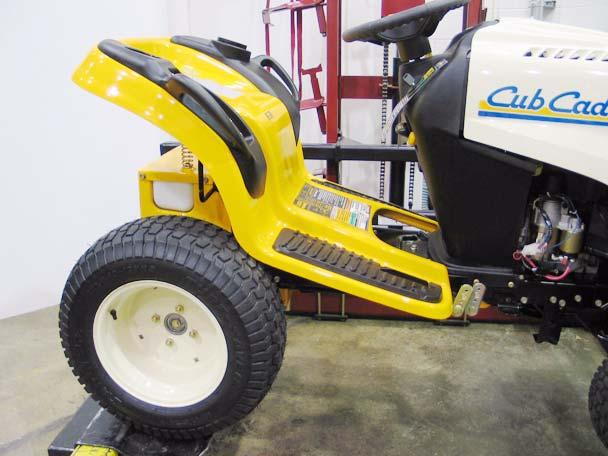
the seat. See Figure 6.2.
Figure 6.2
6.3. This positioning is necessary to provide easy service access to the CVT drive system used on the 1000 series tractors. The rear mounted bat tery, and the tray that supports it are easily removable.
6.4. The battery of the 1500 Series tractor is located under the hood, with the fuel tank mounted under the rear fenders.
6.5. On current models of the 1000 and 1500 Cub Cadet, the fuel is moved from the tank to the car buretor by a vacuum-driven fuel pump that is mounted to the engine. See Figure 6.5.

Fuel Pump
Figure 6.5
6.6. The fuel line runs from a barbed fitting on the bottom of the fuel tank to the fuel pump. 6.7. The 1500 series fuel line should be routed as shown. See Figure 6.7.
Fuel Line
Figure 6.7
6.8. The fuel cap is vented. • There are a few non-vented fuel caps that will fit the filler neck of the 1000 and 1500 Series tractor. • Non-vented caps are used on the Cub Cadet Big Country line of utility vehicles. • Use of a non-vented cap on a 1000 or 1500 Series tractor will cause fuel supply issues. 6.9. In the event that it is necessary to remove the fuel tank, begin by removing the fenders as described in the REAR FENDER REMOVAL section of this manual.
6.10. Make provisions for draining any fuel that remains in the gas tank: 24” of 1/4” fuel line, and a suitable catch pan will be sufficient. 6.11. Pinch the fuel line about 6” from the fuel tank to prevent the line from emptying (unless it needs to be drained or replaced). • Position the catch pan under the fitting on the fuel tank.
• Have the extra length of fuel line handy. 6.12. Remove the hose clamp that secures the fuel line to the fitting on the gas tank.
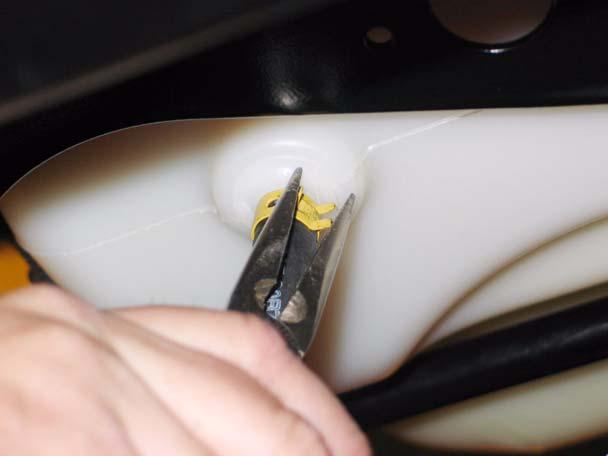
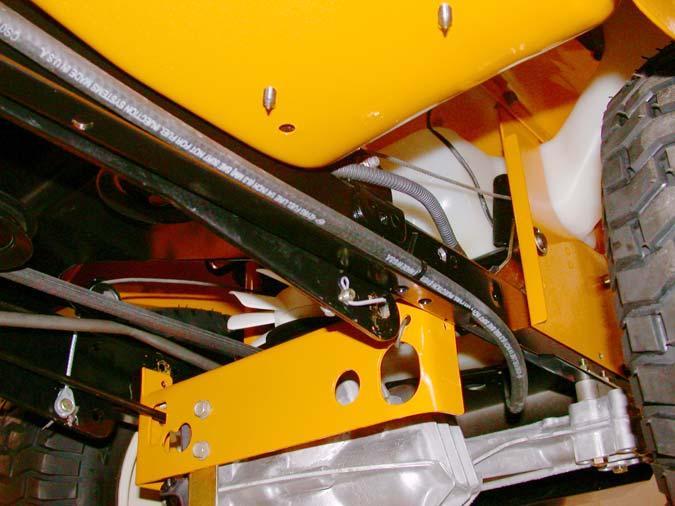
See Figure 6.12.
Figure 6.12
6.13. Quickly pull the fuel line off of the fitting, and replace it with the extra hose. Direct the hose into the catch pan. 6.14. When the tank is empty, dispose of any unusable fuel in a safe and responsible manner.

